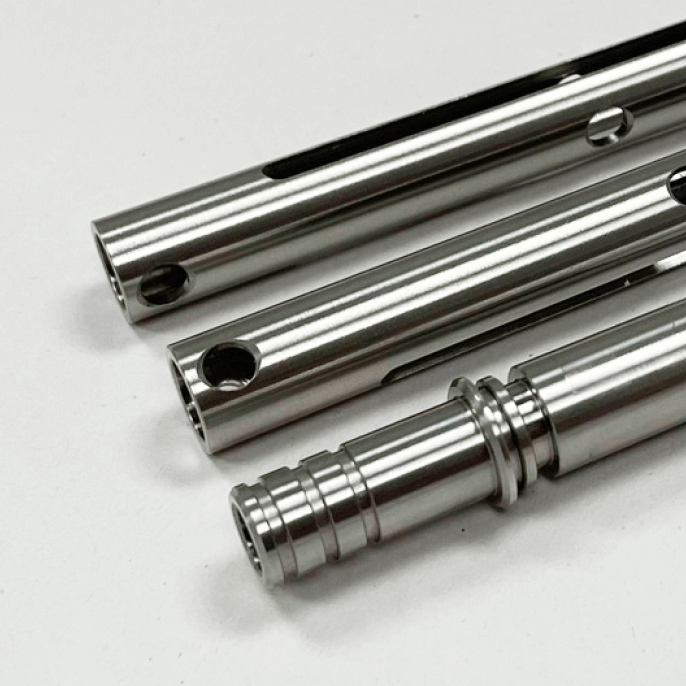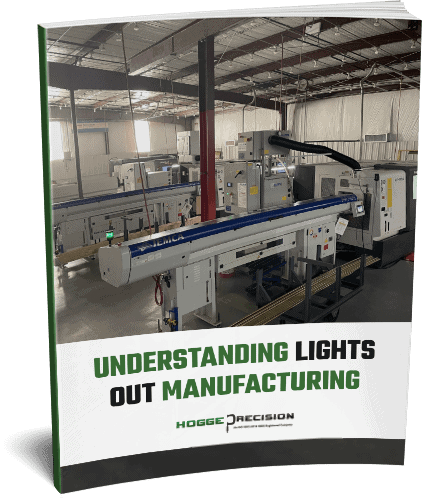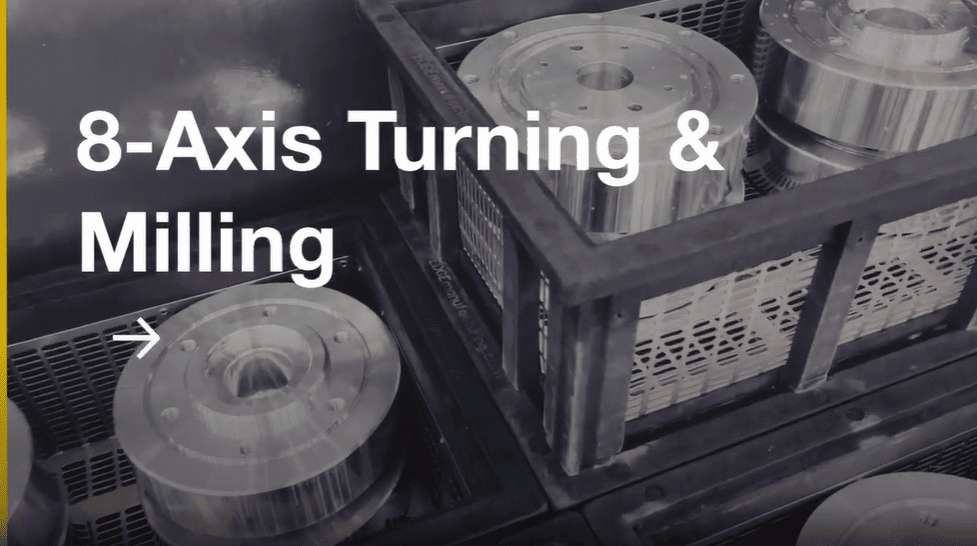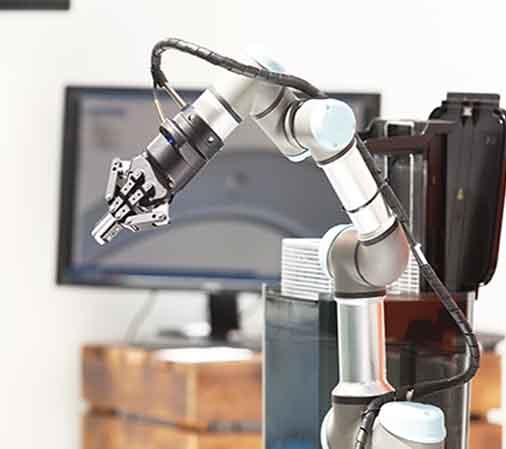
Swiss Machined vs. Turned Parts
Table of Contents
Quick Summary:
Swiss machining and turning are distinct manufacturing processes for precision parts. Swiss machining uses guide bushings for high-precision small, delicate components, while turning securely holds workpieces to produce larger-diameter parts. Both methods offer specific advantages depending on part requirements and production needs.
Turning and Swiss machining are manufacturing processes used to produce a wide range of precision parts and components. While both methods are popular for use across various industries, Swiss machined parts and turned parts each offer their own unique set of advantages. By understanding their differences and considering the particular needs of your application, you can determine which option is best for your needs.
The Difference Between Swiss Machined Parts vs. Turned Parts
The differences between turned and Swiss machined parts come down to how they are made.
Swiss Machined Parts
During the Swiss machining process, the workpiece is fed through a guide bushing to allow it to be cut near the point of support regardless of its length. This significantly reduces deflection to produce parts with extremely high precision. Typically, Swiss machining is used to produce slender, delicate, or complex components in high volumes that meet tight tolerance requirements.
Common examples of Swiss machined parts include:
- Valve components
- Instrument components
- Custom fittings
- Electrical components
- Medical devices
- Watch components
- Optical equipment
To produce these components, Swiss machines use processes such as boring, drilling, milling, threading, turning, and more.
Recent Swiss Machining Project
In a past project, we worked with a customer to Swiss machine a specialty valve stem with rolled threads. This customer’s previous supplier made these in two operations, but we were able to complete them in one with lights-out production. This improved overall quality while maintaining cost-effectiveness for the customer.
Using milling, grooving, thread rolling, and rough & finish turning processes, we produced 5,000 pieces using 303 stainless steel. They measured 1.5’’ in length with a .312’’ OD and tight tolerances of +/- .0004’’.
Turned Parts
In standard turning, the workpiece is securely held at one or both ends. As the workpiece spins, it is cut by tools based on computerized instructions. Turning processes can work with a wide range of materials to produce larger-diameter parts in short, medium, and high production volumes with great precision.
Industries such as power, medical, defense, energy, and industrial often rely on CNC turning to produce parts such as:
- Valve components
- Motion control devices
- Plumbing components
- Custom fittings
- Aerospace products
- Power transmission
Recent Turning Project
A valve industry customer worked with us to manufacture an aluminum safety coupling. Using multi-axis CNC turning and milling processes, we ran lights out to produce 5,000 units per month. The finished product was made with 7075 aluminum and measured 2.425’’ in length with a .875’’ OD and a tolerance threshold of +/- .0005’’.
Advantages of Swiss Machined Parts vs. Turned Parts
One of the main advantages of Swiss machining is that the workpiece is supported very close to the cutting tools as the bar stock pushes through the guide bushing. Compared to conventional CNC turning, this prevents deflection to ensure higher accuracy for small-diameter parts. Additionally, Swiss machines utilize multiple tools and several axes, allowing them to produce parts with complex designs on one machine and in one cycle. Other benefits include high levels of part repeatability, cost-effectiveness, and the ability to achieve very high tolerances.
While Swiss machining is ideal for producing smaller-diameter parts, conventional turning is more suitable for creating short, large-diameter parts with tight tolerances. Turning is the better choice when working with difficult materials and bigger components. CNC turning machines also store multiple tools, which the machine can change based on the operation required. Other benefits of CNC turning include variable production sizes, quick turnaround, cost-effectiveness, and enhanced worker safety.
Hogge Precision Capabilities
Whether you need a precision-turned part made with difficult materials or a small and thin Swiss machined part, Hogge Precision has the capabilities and expertise to assist your needs. As an ISO 9001:2015 registered company, Hogge Precision can produce a variety of precision-machined components for industries such as automotive, medical, construction, aerospace & defense, plumbing, and many more.
To learn more about our capabilities, or for help determining whether conventional turning or Swiss machining is right for your project, contact us today.

Table of Contents
Additional Blogs

Ready to get started?
For more than 35 years, Hogge Precision has been a leading supplier and contract manufacturer of superior quality precision machined parts and assemblies for customers around the world. Thanks to our broad range of experience and state-of-the-art, ISO 9001:2015-certified facility, we deliver top-quality products and services with exceptional attentiveness and integrity. To learn more about our precision machining services, contact our team. We look forward to helping with your next project!

Or call us at: 843-332-3566













